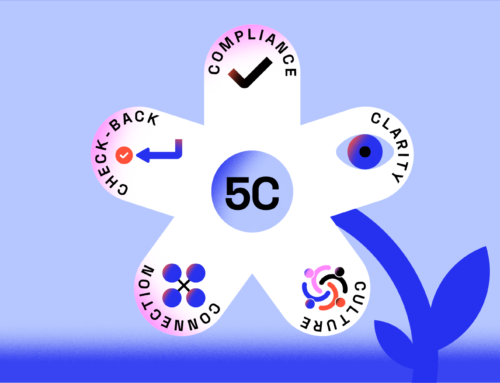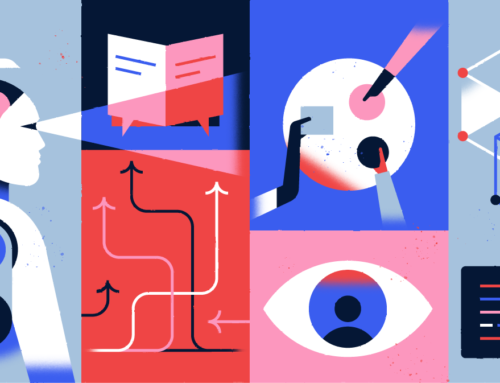Last Updated on October 24, 2021 – 6:50 pm
Many rounds of interviews and evaluations have passed, and a selection decision is made. The candidate is hired, and the “onboarding” or “the employee socialization” process begins. According to onboarding researcher Talya Bauer, Ph.D. of Portland State University, onboarding is “the process of helping new hires adjust to social and performance aspects of their new jobs quickly and smoothly.” In other words, it is what the company “does to help a new employee acquire the required behaviors to succeed within the company and adjust to its culture and their role in it.”
When onboarding is done efficiently, the candidate enters her role smoothly and effectively; a poorly rated onboarding experience, on the other hand, can decrease an employee’s motivation and willingness to perform. According to Digitate, employees who had a negative onboarding experience are twice as likely to look for other career opportunities in the future. Let’s have a look at the basics of this very important process.
Orientation and Onboarding
While the terms “orientation” and “onboarding” are used interchangeably, and many companies only include orientation in their onboarding practice, there are, in fact, very distinct differences between these two terms. One is the beginning of the other, and they jointly create an employee’s first impression of a company. Speaking of first impressions, according to SHRM, nearly 4% of new employees leave their new jobs after a disastrous first day, and a significant percentage of new employees quit their jobs within the first six months.
Orientation is a process that provides the bigger picture of the company. According to the book, Effective Onboarding by Norma Davilla and Wanda Pina-Ramirez, employee orientation is a time-bound single event where most organizations assume that “one size fits all.” They often bring together employees who perform different roles and functions whose main commonality is their effective hire date. Employee orientations are usually structured as a series of separate presentations that highlight the company’s history, values, and culture, together with its vision for the future. Many companies nowadays integrate the use of technology in these orientations; they can even deliver content through a customized next-generation app like Journey. “An orientation typically includes paperwork completion; compliance training; “may also include an expanded tour of the facilities of the organization, an email welcome to all staff.” Employee orientation is full of useful information and paperwork regarding how a company does business, policies, regulations, written and unwritten rules of a company. However, it is “by design far too general and only minimally achieves the goal of facilitating a new employee’s transition to becoming an effective business contributor.”
Onboarding is a series of events that also includes orientation “but much more in-depth to encompass the process of learning the employee’s role and how that role contributes to the overall organization.” Yes, onboarding and orientation activities help introduce a new employee to the organization, its environment, and its culture. Still, onboarding is the way of integrating the employee into an organization. “Onboarding refers to a system of organizational behaviors at the time of hire focused on retaining the new employees.” It consists of short-term activities such as orientation and long-term behaviors to help employees integrate into the company and become productive as part of the team.
Employee Onboarding Best Practices
Socialization is one of the most important activities during onboarding. An assignment of an internal mentor, managerial or peer-to-peer support can allow the new employee to adjust to her role better. “Buddy programs are sometimes used to provide additional, informal support to new employees.” Buddies are employees with enough experience and willingness to share time with the newcoming employee. There can be multiple buddies for a new hire, even virtual ones. Journey app by Vibons, during its 90-day-onboarding program, helps match the new hire with virtual onboarding buddies. The app directs the manager in finding the right person(s) for the new hire by asking the right questions and making sure the system works flawlessly.
Follow-ups are an important component of the onboarding process as well. Given the fact that it takes approximately eight months for an employee to become fully productive, regular and scheduled follow-ups should be fitted into the onboarding. They can be functional, as the completion of enrollment in a benefits plan or managerial, such as scheduling a meeting within the first “30 days to discuss how the job is matching with the employee’s initial expectations. The most effective onboarding activities take place over an extended period of time with regularly scheduled follow-ups that provide opportunities to check in with the employee and provide support as needed”.
Now, let’s have a look at some of the best practices. We know, paperwork can be the most frustrating part of the onboarding process. Kimberly-Clark’s website helps ease the process for newcomers while applying for a job and after being hired. New employees have access to a password-protected website that allows them to complete all paperwork before their first day.
Including managers in the process makes sure that the onboarding goes well. According to Vipula Gandhi from Gallup, “managers are the linchpin in an effective onboarding. When managers take an active role in onboarding, employees are 2.5 times more likely to feel that the process was successful”.
At Zappos, new hires participate in a four-week customer training which includes the entire process of handling customers. “After the first three weeks of training, Zappos extends “The Offer” to anyone who does not consider themselves a good fit for the company. This becomes the last screening mechanism for selecting employees who are best suited for the business before incurring any additional costs.
Extending the program throughout the employee’s first 90 days by digitizing the process is also a viable option. For example, Vodafone Turkey decided to digitize the onboarding of all new employees to plan each employee’s first 90 days and offer them the right experience at the right time. Vodafone used Journey in the onboarding process of all new employees, and “it was clear from the very first day what they were going to do and how they were going to do it.”
Creating appropriate timelines is an important part of the onboarding process too. Realizing that new hires have different needs than longer-tenured employees, IBM created the Assimilation Process, which consists of three steps: affirming, beginning, and connecting. Affirming occurs prior to a new employee’s start date and includes welcoming the new employee. Beginning occurs during the employee’s first 30 days. Connecting occurs during the employee’s first year on the job and consists of three phases. After two months, an “ask coach” checks in to make sure things are on track. At this stage, networking is a priority, so the employee is encouraged to find interest communities within the company. Between four and six months into the newcomer’s tenure, the focus becomes his or her accomplishments and understanding IBM’s way of getting things done. By the end of one year, IBM considers new employees to be fully integrated.
Without a doubt, it’s important to engage and retain talent for your business’s future. Great employee onboarding can improve employee retention by 82%. Employees decide within the first 30 days whether they feel welcome in the organization; an effective onboarding helps them feel they want to stay.
If you want to learn more about new hire onboarding, you can check out our blog posts here.






Leave A Comment